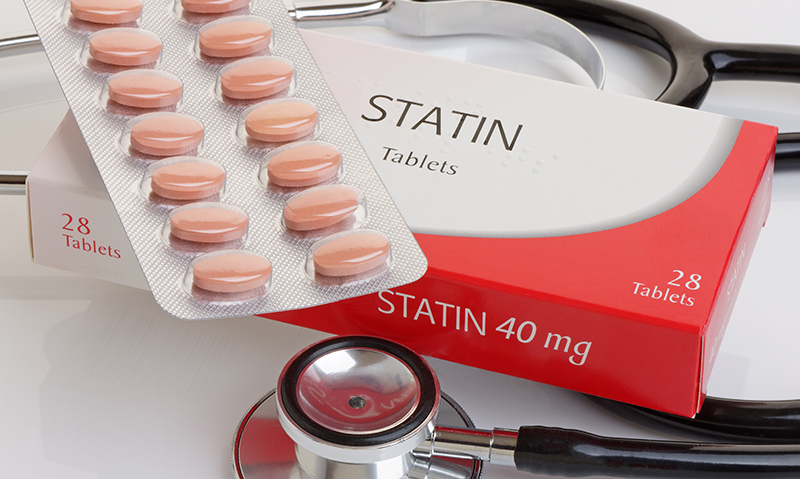GPs are more likely to prescribe lipid-lowering drugs for Indigenous and non-Indigenous patients than they were a decade ago, but experts say much more needs to be done to make a significant difference to cardiovascular morbidity and mortality in Indigenous patients.
An observational study published in the MJA found that the proportion of Indigenous patients prescribed a lipid-lowering medication in a general practice consultation climbed from 4.1% (2001‒2005) to 6.4% (2009‒2013). For non-Indigenous patients, prescribing rates increased from 3.8% to 5.2% over the same period. (1)
Researchers analysed data from the Bettering the Evaluation and Care of Health (BEACH) survey of 9594 primary care encounters with Indigenous patients and 750 079 encounters with non-Indigenous patients aged 30 years or over.
They said their findings suggested “some measure of success in expanding access to medications and reducing cardiovascular risk in Indigenous populations”.
Professor Jennifer Reath, foundation Peter Brennan chair of general practice at Western Sydney University, said the findings were a “positive sign” that there may be some improvement in general practice compliance with guidelines.
“It suggests that there may be improved identification of Aboriginality happening in general practice”, Professor Reath told MJA InSight. “That’s very important, because unless we identify our Aboriginal and Torres Strait Islander patients, we can’t follow the guidelines for them.”
She said linking increased prescribing of lipid-lowering drugs with health outcomes was “drawing a long bow”, but it might be a factor if reduced costs continued to enable patients to access the medications their GPs prescribed.
The researchers noted that in consultations where GPs managed a lipid disorder, the age‒sex standardised proportion was significantly greater for Indigenous patients than non-Indigenous patients (78.4% v 65.2%).
“The proportion of Indigenous patient encounters involving diabetes, hypertension or ischaemic heart disease at which lipid-lowering medication was prescribed was similar to that for non-Indigenous patient encounters”, they wrote.
This finding was concerning to Associate Professor Sophia Couzos, associate professor of general practice and rural medicine at James Cook University, who said that the finding suggested there was underassessment of cardiovascular (CV) risk in Indigenous patients.
“Given higher rates of comorbidity, the more severe chronic disease, and higher CV mortality rates of Aboriginal peoples, this finding might suggest considerable underassessment and underprescribing for the Aboriginal and Torres Strait Islander population”, Professor Couzos told MJA InSight.
“If there is underprescribing of lipid-lowering medication, there is also the added problem [that] we don’t know about patients’ adherence to lipid-lowering medications and what proportion of patients with prescriptions actually filled their scripts”, she said.
Professor Couzos said only 1.3% of the encounters in the BEACH dataset were with Aboriginal people, which was less than half the proportion of Aboriginal people reported in the Australian Census.
Dr Tim Senior, medical advisor to the Royal Australian College of General Practitioners national faculty of Aboriginal and Torres Strait Islander health, agreed the lower proportion of Indigenous patients represented in BEACH data was an anomaly.
However, he said the BEACH data overall was “trustworthy” and the findings indicated that the “first steps” were being taken in efforts to narrow the gap between Indigenous and non-Indigenous CV health.
“It’s an indicator that things are moving in the right direction and GPs are aware of increased risk, and the benefit that statins overall will give people”, he said.
“People who have ischaemic heart disease or cardiovascular disease, whatever their cholesterol level, can benefit from being on a statin”, he said, adding that evidence from a 2002 heart protection study also supported the use of lipid-lowering medications in patients with diabetes, regardless of their cholesterol levels. (2)
Professor Reath said although much more progress was needed before any impact on morbidity and mortality rates would be seen, the study suggested some “promising change” was occurring.
She said engaging Aboriginal and Torres Strait Islander health care providers and health workers more actively in general practice could help to optimise increased prescribing rates.
A study Professor Reath coauthored found Aboriginal health workers had a key role in the prevention of CV disease. (3)
“It’s great that the GP is writing a script for [lipid-lowering drugs], but does a patient understand why they need to take it, how to take it, the importance of taking it regularly, or coming back for review? An Aboriginal health worker can provide that sort of explanation in a way that might increase patient adherence”, Professor Reath said.
(Photo: roger ashford / shutterstock)

 more_vert
more_vert